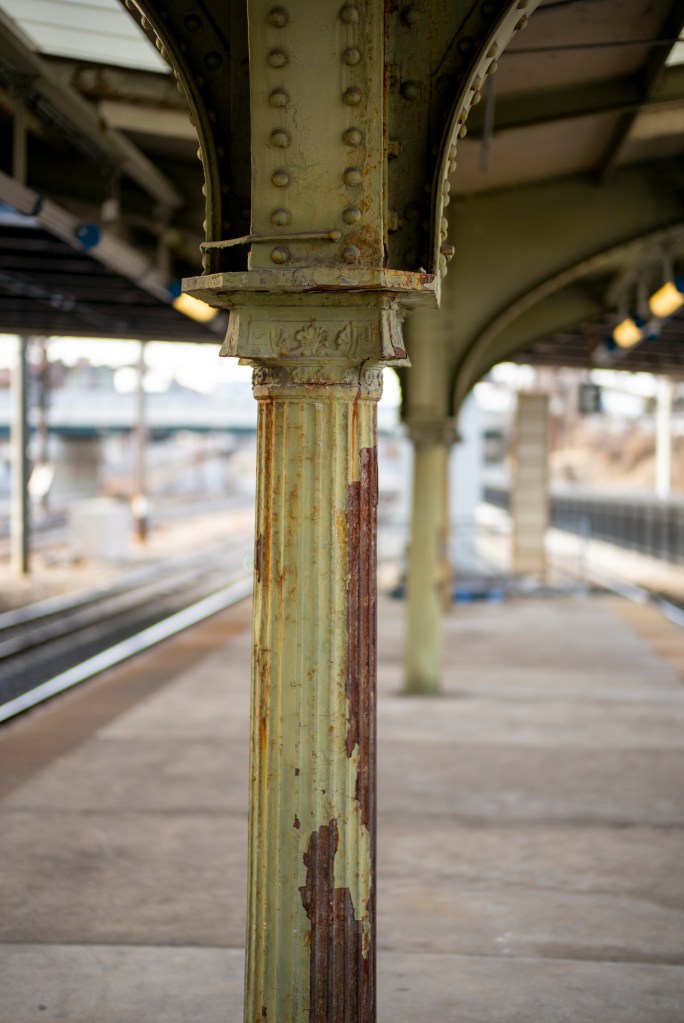Quick Disclaimer: Making these reviews/write-ups is a hobby, and my attempt of contributing something useful to the photographic community. All costs of securing the equipment I discuss comes out of my pocket. If you found this review/write-up useful, please consider making a donation via Buy Me a Coffee. As always, thank you for visiting and don’t forget to turn off your computer or smartphone and take some photos!

Build, Size & Weight
The TTArtisan feels extremely well made. It’s all metal, even the focus tab. It’s a dense little lens. The lens mounts firmly into place. The paint looks top notch, and the number etching is clean. TTArtisan tried their hardest to mimic the exterior look and construction of a modern Leica lens, and in most ways they succeeded.
With that said, the TTArtisan 50mm is noticeably bigger than the Leica 50mm. It’s slightly heavier, wider, and longer. When the lens hood of the Leica 50mm is extended, they’re about the same length. To be fair, the TTArtisan doesn’t seem overly big on its own, but when side-by-side the size difference is definitely noticable.

Handling
The TTArtisan 50mm handles nice enough. The focus ring is smooth, the aperture ring turns easily yet snaps into place at each half stop, and the focus tab works great. The focus throw is a bit longer than I like, but that’s just me.
On the flip side, I feel that the Leica handles much nicer. Perhaps some will find that statement “snooty,” typical of a Leica user… There isn’t necessarily anything wrong with how all the TTArtisan handles, but when handling both at the same time the Leica is an overall more refined experience. For one, the Leica has a slightly smaller focus throw. Additionally, the Leica has a much smoother and easier-to-turn focus ring. The aperture ring on the Leica also turns more smoothly, and has a smaller turning radius. Combined with its smaller size and weight, the overall handling experience of the Leica is more refined. These subtle differences illuminate the thoughtful engineering behind Leica equipment. Such differences are not surprising, however, considering the price difference between the TTArtisan and Leica.
Bokeh
I’m not one to examine bokeh characteristics, so I’ll just post the photos and let you decide. I find the bokeh to be very similar.


Other Considerations
The TTArtisan does not have a built-in hood nor does it have 6 bit coding. The Leica has both.
Image Quality
So, how the heck does the TTArtisan 50mm f/1.4 actually perform? Not too bad, considering the price. This is a $350 M-mount lens, and it performs fairly well with that in mind. Not surprising, at f/1.4 there is vignetting and the center is sharper than the corners; the situation improves as the aperture is stopped down. I didn’t do any formal tests for chromatic aberrations or flare, but both are present at f/1.4 and lessen as the lens is stopped down. This is standard for most 50mm f/1.4 lenses and I didn’t expect anything less of this lens.
Compared to the Leica? To my eye, the Leica is markedly “better.” However, given that most folks nowadays just post their photos on social media and blogs (jab at myself), there isn’t a huge day-to-day difference to the casual viewer. I’ll walk through a few scenarios where there are differences – or none that I can tell.
Sample #1
So, here are two very boring pictures of my balcony shot at f/1.4. I’ve been staring at these photos for 10 minutes, and honestly I can’t find any major differences. If anything, the Leica 50mm Lux is slightly greener, while the TTArtisan is slightly more magenta. The chromatic aberrations on the balcony rail are very similar. However, this is a poor scene to tease out any differences so let’s move on…


Sample #2
Here are two more boring pictures, this time outside of the Belvedere in Baltimore. These are a bit more useful at illustrating the differences of these lenses. Pay attention to the fine detail in the vertical column on the right side of the frame. Without even zooming in, the Summilux shows more crispness and clarity in the fine detail of these columns, showing how well the Leica performs outside of the center of the image wide open. The gold awning in the center is also clearer/sharper in the center of the image with the Leica. Finally, you will notice there is less chromatic aberration with the Summilux. I found these results to be consistent when comparing both lenses, with the takeaway being the Summilux is much better than the TTArtisan without a doubt. Again, these samples were shot at f/1.4.


Sample #3
Now for a more “traditional” comparison. Here is a series of photos of Egdar Allen Poe’s statue in Baltimore, shot from f/1.4 to f/2.8. A few observations jump out to me in this series. First, both lenses vignette similarly at f/1.4, but at f/2 the Leica vignettes less than the TTArtisan. Second, to my eye, the Leica shows more clarity and contrast in the details of the statue at each aperture.






Takeaway
The TTArtisan 50mm f/1.4 is built to look and act like a Leica, at a fraction of the cost. Indeed, the TTArtisan does perform admirably considering the cost, and is well constructed. However, the TTArtisan is not in the same league as the Leica and this isn’t an apples-to-apples comparison. Not even close, in my opinion. This shouldn’t be surprising considering the Leica 50mm Summilux ASPH costs about 10 times as much. As the old adage goes: you get what you pay for. In my opinion, the Leica is optically “better,” is lighter and smaller, handles much better, has a built-in hood, and comes with 6-bit coding.
Sample Photos (TTArtisan 50mm f/1.4 ASPH)










